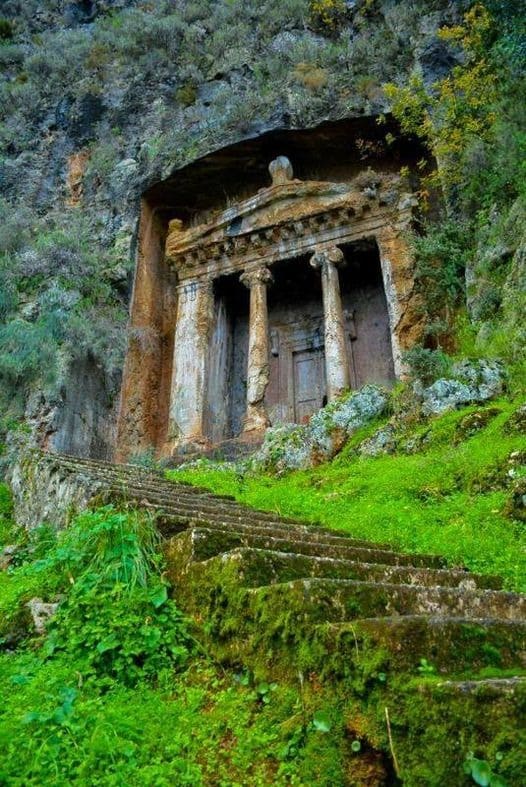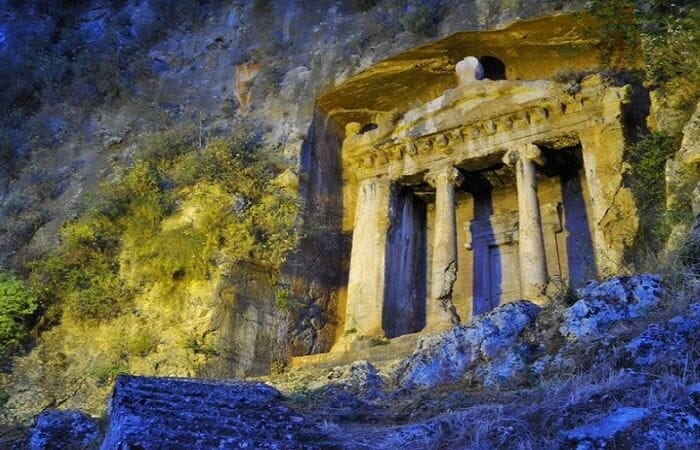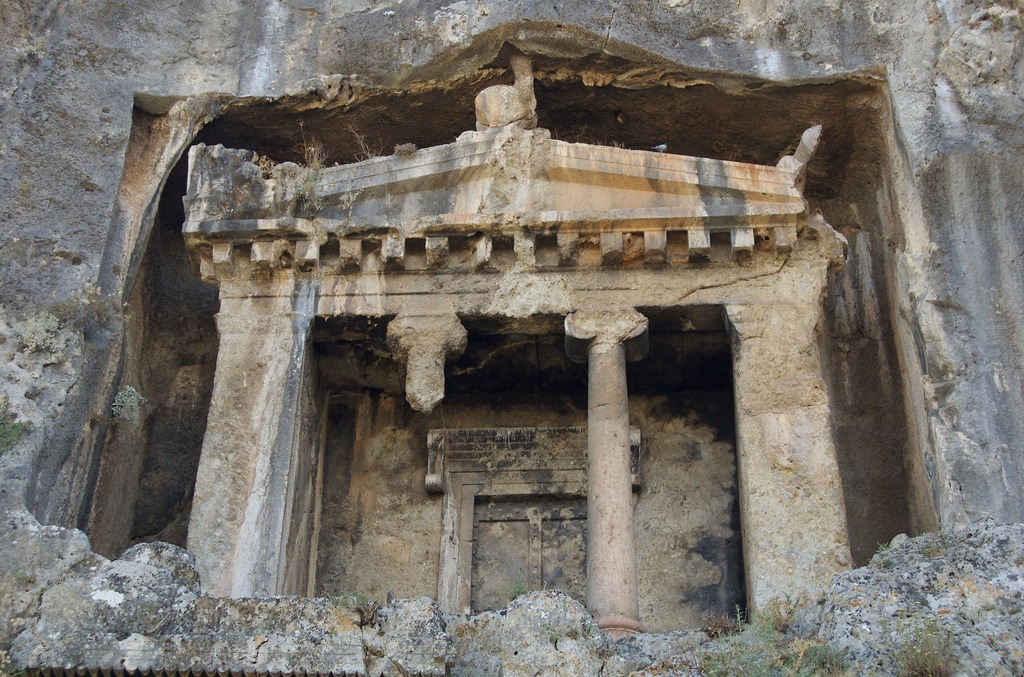Tomb Of Amyntas – A Fascinating Relic From The Ancient Lycian Civilization In Fethiye
The Tomb of Amyntas, also known as the Fethiye Tomb, is a fascinating relic from the ancient Lycian civilization in Fethiye, Turkey’s Muğla Province.
This impressive structure was carved into a mountainside in 350 BC and dates back to the Lycian period when Fethiye was known as Telmessos.

Who Were the Lycians?
The Lycian people lived along the southwestern coast of what is now Turkey.
Their region, called Lycia, was between the Mediterranean Sea and the Taurus Mountains.
This unique location helped the Lycians develop their own distinct culture, art, and architecture.
They had their own language and script.
The tombs they carved into the mountainsides, like the Tomb of Amyntas, are a testament to their craftsmanship and reverence for their leaders.
Lycia was made up of independent city-states. Although the Lycians were influenced by their Greek and Persian neighbors, they maintained their own unique traditions.
Lycia became part of the Persian Empire in the 6th century BCE and later was controlled by the Romans and Byzantines.
Today, the ruins of Lycian cities are important archaeological sites and tourist attractions.

Lycian Rock Tombs
Lycian rock tombs are found in many ancient Lycian cities like Myra, Xanthos, and Pinara.
These tombs were burial chambers for important people in Lycian society.
The Lycians believed that being buried in high places would help the dead reach the afterlife more easily.
These tombs often look like Lycian houses with detailed carvings, columns, and doorways.
They were made during the peak of Lycian civilization, between the 5th and 4th centuries BCE.
Some are older, from the 6th century BCE, and others were made during the Roman and Byzantine periods.

The Tomb of Amyntas
The Amyntas Rock Tomb, built in the 4th century BCE, is located on the cliffs above Fethiye.
The tomb is named after Amyntas, as an inscription reads, “Amyntas, son of Hermagios.”
Unlike many other rock tombs in the area, it is notably larger, offering visitors a sense of the grandeur the Lycians bestowed upon their leaders.
The tomb’s façade is a blend of natural rock and human craftsmanship.


